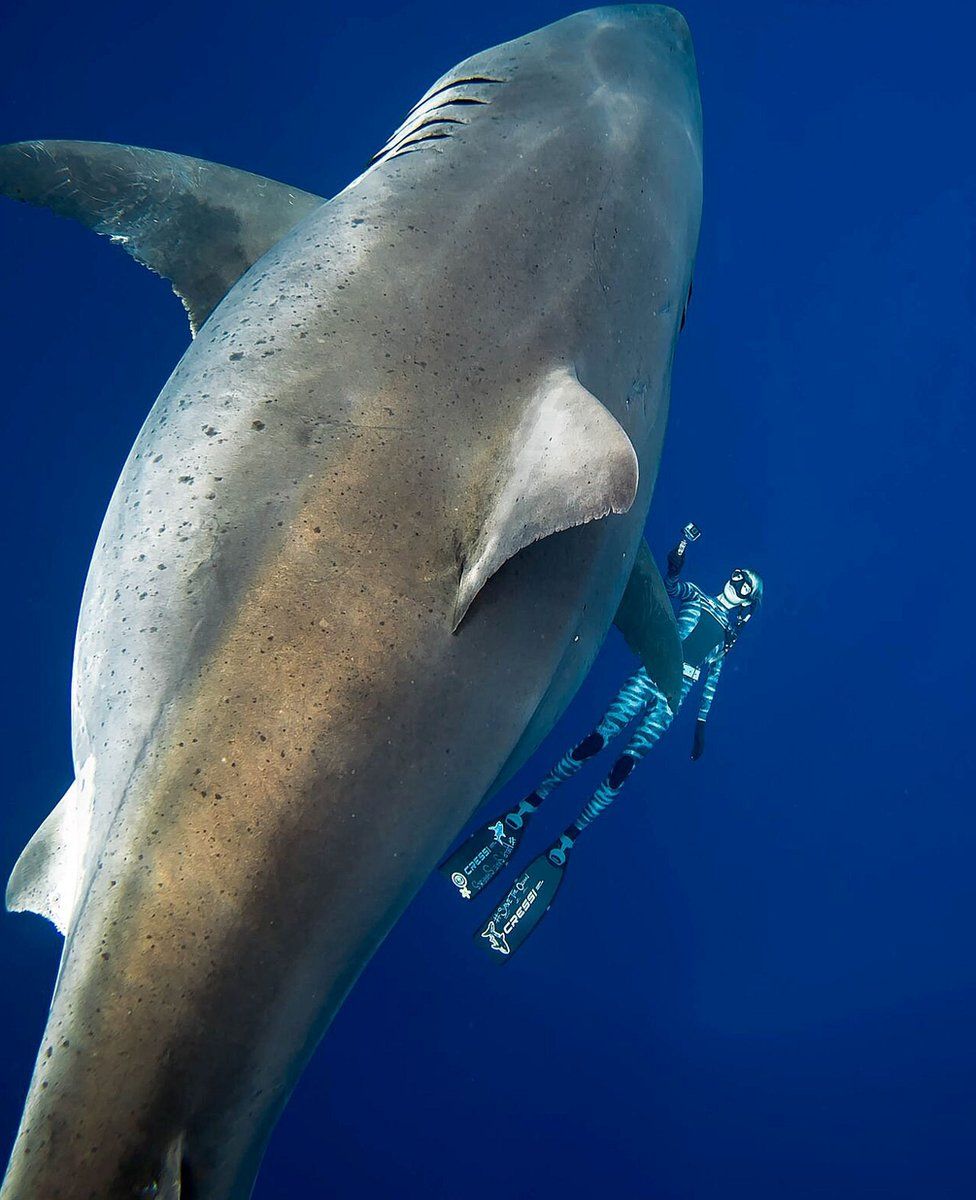

We’ve actually seen populations decrease over the years.Ĭailin: So really, they should be more afraid of us than we are of them.ĭeep Blue stretches roughly 20 feet from tip to tail. Sharks are really threatened now due to overfishing. When you see how many people are in the ocean versus how many shark attacks actually occur, the numbers are really, really statistically low.

Sharks are actually harder to find in the ocean than people think. That’s what wildlife is about: eating and conserving energy to survive 'til your next meal. They’re usually swimming around trying to conserve energy. Kimberly: I think everyone thinks that they’re swimming around at the beach trying to get you, and looking for people to bite into. So the stories get passed around.Ĭailin: As someone who has spent so much time in the ocean, with underwater creatures of all kinds, what do you think is the biggest misconception about sharks? I think because of that, we’ve got such a negative history with sharks. So kind of like a dog comes up to you and checks you out with its mouth. Because they don’t have hands to investigate with. And on top of that, sharks, when they do investigate us, tend to do it sort of fatally.

We can push our bodies really far, but when it comes down to it sharks live in this world that we’re completely unfamiliar with. You know, humans aren’t really built to tolerate extremes. Kimberly: I think it’s kind of a primal thing. Why do you think so many of us have this fascination with sharks? © Kimberly JeffriesĬailin Loesch: For a lot of people, Shark Week is the only part of the year they religiously watch Discovery, and SharkFest is the only time they are glued to National Geographic. And in my case, I like to take pictures and show them to people to help them fall in love with the ocean.Ī sand tiger shark photographed in South Africa. We’re seeing a place that no one else really gets to see, so it’s our responsibility and our duty to share about it. And then I realized as divers, we’re sort of ambassadors for the ocean. And I found that I really kind of fell in love with it. They actually allowed me to push my first camera underwater, and do a lot of the film-related stuff. After I reached a professional level, I ended up doing some side work for a movie called Chasing Coral. I think people don’t realize how few people actually have access to the ocean, or ever get the chance to go on vacation somewhere and be with underwater. It’s this place where so few people really go. I found it to be really therapeutic and beautiful.

So I started progressing through dive certification and training. And I was surfing, but I really wanted to see what was underwater. I eventually moved out here kind of full-time a little over a decade ago. So I grew up snorkeling here in Hawaii, and kind of bouncing back and forth between the two places. Because my mom was a single mother, come vacation time she’d send me to stay with family. Even though I was by the water, I grew up in New York City. Kimberly Jeffries: For the most part I grew up pretty land-locked. Hannah Loesch: Where did you develop your interest in underwater photography? Was this something you grew up wanting to do? We spoke with Kimberly by phone ahead of the special and discussed her career's origin story, her experience diving with the world's biggest recorded great white, and why people are so fascinated with sharks.Ī blue shark photographed in Cabo San Lucas, Baja California Sur. Her January 2019 encounter with Deep Blue, the famous great white who is widely agreed upon to be the largest ever recorded on film, will be detailed in the encore airing of World's Biggest Great White? on August 2nd, during Nat Geo Wild's SharkFest. Based on Oahu, Hawaii, Jeffries is known for her nature and wildlife photography, most notably her haunting shots of marine life ranging from sea horses to sharks. But what is it about sharks that keeps us tuning in year after year? It's not the summer Olympics or the America's Got Talent finals: it's Shark Week (or for Nat Geo Wild fans, SharkFest), and for some, it's the only time all year National Geographic or Discovery is the go-to channel. © Mark Mohler 2019įor two weeks during the summer, people all over the country spend their dog days not at the pool or beach, but glued to their TVs. Kimberly Jeffries photographs Deep Blue, one of the largest recorded great white sharks to date. It’s not like Jaws where the shark is breaching out of the ocean and belly flopping, and, like, ripping animals. "It wasn’t at all how you would imagine a great white shark.


 0 kommentar(er)
0 kommentar(er)
